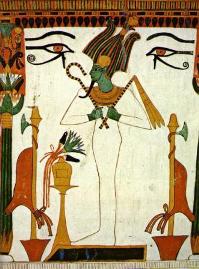History books are full of many revolutions that took place at different parts of the world, some of which have made dramatic changes to humanity. Old ideas about divine rights of monarchs and hierarchy succumbed to enlightenment principles of citizenship and equality by the French Revolution in 1789. By the mid 18th century AD, thirteen American colonies joined together to achieve freedom from the British Empire, uniting to form the United States of America. In 1917, the Russian Revolution destroyed the Tsarist autocracy, leading to the foundation of the Soviet Union, a super-power that remained until 1991.
Egyptian history also has its well-known revolutions. The most famous are that which took place against the British Occupation by the people in 1919, and led to Britain’s recognition of Egyptian independence 3 years later, with the implementation of the first constitution in 1923. However, Britain’s refusal to withdraw its military forces, and its contiunuous interfering and control of Egyptian policy, have led to another revolution in 1952 that started as a military coup. Earlier in 1879, an uprising against the Ottoman ruler (Khedive) and European influence was led by Orabi, an army officer, but was soon aborted by the British Occupation in 1882. Also, much is known about the recent revolution against the dictatorship of Mubarak’s regime in January 2011, which is expected to affect the whole Middle East. However, very little is known about a much earlier revolution. Practically, the first to take place ever in history, starting cicra 2510 BC during the 5th Dynasty. The uprising against tyranny and opression by the king and the clergy escalated gradually over 50-300 years of chaos before it achieved its final goal during the 6th dynasty, hallmarking the fall of the Old Kingdom. With religions forming an integral part of the Egyptian identity, the dispute started due to suppression of religious rights for the people, but later it turned into a mere political one with several governments overthrown.
THE EGYPTIAN MYTHOLOGY OF GENESIS
A variety of different concepts of the ancient Egyptian religion co-existed, but the priests have never evolved a clear system or exercised any effort to simplify them to the public. At least three stories of genesis were known, the most popular of which was the Heliopolitan version. This came to our knowledge chiefly through the Pyramids Texts found in the tombs of the 5th and 6th dynasties’ kings at Saqqara and Dakhla Oasis.
The geographical horizon known during the pre-dynastic period was so narrow, with the earth conceived as an oval island in the middle of an ocean. This island was traversed by the Nile, which stemmed from springs in the region of the 1st cataract at Aswan. All around were mountains, on which the sky rested on four of them. The stars were thought to be hanging from the sky like lamps. Below the earth surface was the under world, “Amenti”, or the land of dead. It contained twelve divisions, the “Duat”, where darkness and danger lurked.
1- THE HELIOPOLITAN MYTHOLOGY OF CREATION
The Heliopolitan theory was centered in Heliopolis (On – Innu – Innu Mehret) which name means the “Northern Pillar”. It was believed that Heliopolis, together with Giza and Abydos, were parts of the first land that emerged from primeval waters at the moment of creation. The gods have commenced their rule on earth at these sacred places.
The mythology shows that initially the universe was a vast ocean of watery nothingness called “Nun”, which contained all dormant seeds of life. Despite all the various creation myths (Helipolitan, Ashmonin and Memphite), Nun, the primordial water, was always the god from whom the original creator (who differs among various mythologies) sprang from. Water was thus always considered the source of all existence. Even after the world was created, Nun continued to exist.
This unique and immortal god (god of ocean) was not created, begot by himself, invisible and hidden in the inaccessible depths of his own being. Out of this cosmic nothingness rose a mount of dry land, on which “Ra”, the sun god, came to materialize in a self-created form. He was considered the creator god, and Egyptians called themselves “The cattle of Ra”. With Ra the sun (fire) originating from Nun (water), and the light (Ra) coming to disperse darkness (Nun), this emphasized a harmony between opposites into one “being”, never to be achieved but by the mightiness of the creator.
In order to make the belief in this one god understandable to public, the priests expressed the attributes of the sun by means of three subtle representations: “Ra” or the sun itself, “Atum” the materialized god and the perfect and complete one (as he held both sex characters), and “Khepry” the arising one. Atum was Ra’s incarnation (the sun) during its setting as an old man with a foot near the tomb. Khepry represented the sun during its morning rise in the form of a youth shown as a scarab.
The creative god sexually united with himself, begetting a pair of gods: “Shu” the god of dryness or air (The god of four winds) and “Tefnut” (The Spitter) the goddess of dew and moisture. With Shu’s creation the first wind blew, and with Tefnut’s creation the first rain fell. Both were resembled as lions. Dryness and moisture united together to begot another pair: “Nut” the goddess of the sky, and “Geb” the god of earth. The sky and earth then came into being. Nut gave birth to four gods: “Osiris”, “Isis”, “Seth” and “Nephthis”. The nine gods together formed a divine ennead over four generations, as an interaction between the sky with its rain and storms, and the earth with its fertility, dust and water.

In order to give birth to demigods (an intermediary between gods and humans), Osiris married his sister Isis, while Seth married Nephthis. Osiris was fertile, while Seth was impotent (associated with the barren deserts). Four of these gods (Ra, Shu, Geb and Osiris) were said to have once sat on the throne of Egypt, followed by Horus (Osiris and Isis’ son), then by the ibis-headed “Thoth” (or “Djehuty”); the god of wisdom, measurements and later of science and mathematics.
The legend proceeds to show how humans were created. Ra lost one of his eyes and sent Shu and Tefnut to search for it. As they were late, Ra made himself another eye, but the lost eye returned. Finding that it has been replaced, the lost eye started weeping, and from its tears man was born.
Ra sat on the throne of Egypt to rule the earth for thousands of years. As he became old, humans started to rebel and jeer at him. In his wrath, Ra decided to unleash Sekhmet (goddess of war and destruction) to endeavor and eradicate them. Sekhmet poured fire out of herself and savaged humans in an ecstasy of slaughter that continued unabated for some time until Ra, out of mercy, decided it was enough. He intervened to save the lives of the remnants, who will later form the ancestors of the present mankind. Peace supervened and humans were thus saved. Ra then decided to withdraw and ascend to the sky, and handled all earthly affairs to Thoth (Djehuty), and the cobra (the royal symbol) to Geb.
With Ra’s ascent away from earth, complete separation between gods and humans was thus completed. Nut (sky goddess) was said to give birth to Ra (sun god) repeatedly, as he voyaged daily across the horizon over her body until reaching her mouth at sunset. He then passed into her mouth and through her body to be reborn the next morning as Khepry.
The struggle between Osiris and Seth then with Horus:
Shu, Geb then Osiris followed Ra to the throne of Egypt. Shu’s reign was troubled by plots and disease. His followers revolted against him, so he abdicted the throne to Geb. During his reign, Geb decided to open a golden box in which Ra has deposited his cane, lock of hair and his uraeus. Once unsealed, a burst of fire (described as the breath of a divine serpent) came out to kill all Geb’s court, and to burn him as well.
Osiris followed him to sit on the throne. He was a popular ruler and loved by his subjects due to his fairness and mercy. Osiris taught the people agriculture, as well as writing, abandoning cannibalism, worship of god and helped them live in a civilized and systematic community. He never forced any man to carry out his instructions, but by means of gentle persuasion and appeal to their reason, he succeeded in inducing them to practice what he preached. Thoth helped him through his wisdom and science. Osiris traveled to other lands to bless mankind and teach them civilization, leaving his wife Isis as his regent. This was the first spread of ancient Egyptian philosophy and doctrine to the outside world.
His reign was so short, as he was killed upon his return by his wicked brother Seth, in a plot to usurp the throne, and Seth announced himself as king. Osiris’ body was placed in a chest which was thrown into the Nile. Hapi, the Nile god carried the chest to the sea, where eventually it was cast ashore of Byblos in Phenecia. The waves cast it into a tree on the shore, which became a resting place for the hidden body of Osiris. The tree was made into a pillar in the Phenecian king’s palace.
Meanwhile, Isis (symbol of the purest wife and widow), together with her loyal sister Nephthis and the jackal “Anubis” (illegitimate son of Osiris and Nephthis) had been ranging allover in search of the chest. After a long quest, she reached Byblos, and was able to bring the chest back to Egypt. Before she buried him, Seth by chance saw the chest, and recognized it at once. In anger, he chopped the body into 14 pieces that he dispersed allover Egypt. The phallus was thrown in the Nile, where it was swallowed by a fish that became cursed among all Egyptians.
Isis searched again. She streamed the Nile in a boat made of papyrus. She gathered all parts except the phallus, and with the aid of Anubis, she embalmed the body. She remained to mourn and recite magical spells until the gods listened to the plea of the virgin. Her mother, Nut, resurrected him for a brief time, during which Isis through magic conceived “Horus” from him. Horus was hidden in an island near Buto (the future capital of Lower Egypt), and Osiris was raised by the gods to the sky. His realm lied beneath Nun as the “King of the Afterlife”, in compensation for the unfairness he has faced.
When Horus grew up to manhood, he set out to seek his revenge of his father’s murderer. He challenged his uncle Seth in a fierce conflict all over Egypt, and finally Horus defeated Seth at Edfu. After his defeat, Seth accused Horus to the divine court of being an illegitimate son to Osiris. He also made doubts of the chastity of Isis the virgin. The court was assembled, headed by Ra, Geb and the other four Heliopolitan gods for eight full years, as Ra believed that Horus was too young for kingship. Isis defended her chastity, supported by the testimony of Atum-Ra, the defense of Thoth as well as her witchcraft. Finally the court condemned Seth, and Horus inherited his father’s throne. Isis was then named “The holy mother” after justifying her pregnancy to her son from the “Soul of his father” the god. Seth became the ruler of deserts, as the god of chaos and evil.
Isis became a vital link between the gods and mankind, where the pharaoh was her son, as the living Horus, and suckles her divine breasts. Often the images of the queen mother and current pharaoh were depicted as Isis holding Horus in her lap. Kings would take the name of Horus as their own upon coronation, as a representation of his earthly embodiment.
Osiris has gained a high esteem among the Egyptians who started worshiping him. They believed that all the dead will mimic him. They prayed for their dead to “live as Osiris has lived”, for “extinction to be warded off him as it had been warded off Osiris” and to “become preserved from decay as Osiris was preserved”. Similar to Osiris’ body being torn, gathered then revived by the gods, Egyptians prayed for their dead to restore their souls as Osiris.
Osiris was then considered to be heading a court in the afterworld, where all dead will be judged. Such doctrines and tenets were depicted on the tombs, particularly the pyramids of the 5th and 6th dynasties, and were hence named “Pyramid Texts”.
2- THE ASHMONIN (HERMOPLIS) MYTHOLOGY OF CREATION
“El-Ashmonin” was the capital of the 15th nome of Upper Egypt, which lies 300 Km south of modern Cairo. The story of genesis in such version is not much different from the Heliopolitan one, but the sun was considered in the last stage of creation rather than the beginning. The moon preceded in existence and importance. Other aspects of the story are almost similar, as the early lifeless “nothingness”. The self-created Ibis-headed moon god “Thoth or Djehuty” (god of wisdom and learning) and his consort “Ma’at” (goddess of truth and justice) produced four other pairs (gods and their consorts). Those were “Nun” and “Nunet” (the cosmic ocean, same as in the Heliopolitan version), the toads “Huh“ (god of time and eternity) and “Heqet” (goddess of birth), “Kauk” and “Kauket“ (darkness) as well as “Amon” (The hidden one) and “Amonet” (or “Mut”), all to form eight primordial gods of creation. The four primal frogs engendered the egg from which the sun grew.
In addition to being the original head of this divine family, Thoth was also included in the Heliopolitan Mythology. Though he was not a member of its ennead, he was considered as the 6th or 7th divine pharaoh of Egypt. This was depicted in numerous records, the most important of which was the Turin Canon.
Amon, despite being the last of the eight, was later considered to be self-created, and the Thebean-priests made him the head of a divine family. He was initially a local god (wind god of the Nile boatmen) until the Middle Kingdom. As Ra’s cult was so powerful by that time, and since Amon was an obscure god, his priests could not but combine him with Ra (Amon-Ra) during the 12th dynasty (circa 1991 BC). This was influenced by the political move of the capital southwards with the change of the reigning family. Amon was elevated to the status of sun god, and later was considered “King of the gods”. All what has been earlier related to Ra, was then attributed to Amon-Ra, including the heading of the tribute during the Horus-Seth struggle.
At the time of the empire (The New Kingdom), Amon-Ra became the patron of the army, and the endower of their victory. No other god in Egypt could compete with him. By the 18th dynasty, Amon was able to replace Horus as the national god.
3- THE MEMPHITE MYTHOLOGY OF CREATION
The most advanced cult at Memphis came to our knowledge from a huge granite slab found in its Ptah Temple (now in the British Museum). The slab dates back to King Shabaka of Cush in Nubia (25th dynasty – 6th century BC). This was copied from an old papyrus, probably dating back to the 5th or 6th dynasties. The story is a mixture between the two previous ones, but with consideration of the local god, “Ptah” (the patron of artists and craftsmen), as a creator god.
Ptah created everything by a “thought” in his mind, then the “utterance” of the name by his tongue. This unique method was more of an intellectual nature, rather than the physical one in other mythologies. He thus created gods and founded towns, then created humans from a clay mould. Ptah then “rested” on his throne.
Ptah was frequently represented as “Khnum”, the ram-headed god of Elephentine. He was associated with his wife “Sekhmet” (goddess of war and the wrathful eye of the sun god) and his daughter “Nefertum” (The Perfectly Beautiful) in a triad (the Memphite Triad). Ptah was followed by Ra, the sun, creator of life and squanderer of darkness. Ra was followed by Shu, the god of air who has riped the earth and sky. Geb followed to the throne, then Osiris who was killed by Seth, and Horus later regained the throne.
The Turin Papyrus proceeds with three further gods: “Thoth” (Djehuty), his consort “Ma’at” and “Hor-…..” (the remaining part of the name was defaced). Ma’at (Ra’s daughter) represented the union of the deceased soul with the cosmic system after final judgment. She was also the goddess of truth and justice. Nine further gods followed, and the whole group ends in “Shesmu Hor” (Followers of Horus).
The Memphite cult of Ptah was so powerful to become the official one of the state by the 1st dynasty (3150 BC). Political struggle, particularly in the 4th dynasty, has shaken his position in favor of Ra. Finally, with the onset of the 5th dynasty, Ra became the official deity of Egypt. Ptah’s cult gradually disappeared from the scene, to be revived briefly during the 19th dynasty before it faded forever.
THE STRUGGLE BETWEEN CULTS

The ancient Egyptian doctrines included deep and solid belief in the afterlife and immortality, a unique belief among people of antiquity. Man after death no longer remained in the darkness of his tomb, but would move to another world which was previously vague to the minds. This could only be achieved if the body was preserved through embalming.
Immortality was understood in ancient Egypt since existence itself was formed of “opposites” (water and fire, earth and sky, good and evil). Such evanescent living world has to be opposed with an immortal one, and contrast has rendered immortality a crucial constituent of the ancient Egyptian cult.
Each human was believed to have three constituents of his being: the “Body”, “Ka” and “Ba”. The “Body” was the physical part, while the later two constituents formed together the immortal elements. Those three combined powers were only separated after death. The physical “Body” was what remained inside the tomb when embalmed. In case of kings, the body would still be sitting upon the throne, only if mummified.
The second constituent was the “Ka”, which was the energy given to man on his birth. It was his non-physical image that served to protect him during life from dangers. Upon his death, the Ka accompanied the Body to the tomb, but they became separated. In order to survive inside the tomb it consumed the funerary food, but if this was unavailable, it would leave the tomb and roam the surroundings searching. During its roaming outside, it might envy the living and even revenge from them since they have deserted it foodless, might attack or torture them, or even cause diseases. Upon its return back to the tomb, it rejoins the embalmed “Body”.
The third constituent was the “Ba”, which was the Egyptian word for the “soul”. It was believed to leave the “Body” after death, and live among the birds on trees that the deceased has planted during his life. For kings, this resembled their divine nature, and would ascend after death to sit in the skies among stars, and accompany Ra in his boat during his daily voyage.
During pre-dyanstic times and the Old Kingdom (1st – 6th dynasties), the supremacy and divine nature of the kings were so solid, while the lives of common people were almost marginal. Though the mythology of genesis was clear to elaborate the creation of the universe, it failed to demonstrate death and afterlife for the common people. Both the “Ka” and the “Ba” were limited to king as the son Ra who thus combined both human and divine natures that granted him immortality. As the commons – and even the nobles – were not immortal, they remained to be deprived of the “Ba”, and their afterlife was limited in the darkness of their tombs. The Pyramids Texts was clear when saying addressing the Pharaoh:
“You enter the gates of heaven – That people are not allowed”.
Such continuous denial was the initiative to the people’s revolt, and profound changes in the ancient Egyptian religious philosophy. Many concepts changed or at least deepened, with the adoption of the major and most popular cult attributed to Osiris. With the onset of the 5th dynasty when priests became kings themselves, the nobles were granted such privilege. The revolt as well as the fall of the Old Kingdom resulted in commons obtaining the same privileges.
Religious struggle between the Ra and Ptah-priests has started during Khufu’s (Cheops) reign during the 4th dynasty (2625 – 2510 BC), to be followed by a political one among his successors. Most scholars agree that Egypt has known the calendar since 4241 BC, if not earlier. This specific year has coincided with the rise of the Sothis star (Sirius) simultaneously with the sun, a phenomenon that the Ra-priests – through continuous astronomical observations – have noticed. Its repetition (as modern astronomy has proved) every 1460 years has later led to more accurate recognition of the missing quarter of a day in the solar year. This scientific observation resulted in accurate calculation of the timing of the Nile flood. Khufu – who’s reign coincided with this discovery –realized that it was the sun (Ra) that controlled the timing of the flood, not the stars (the god Khnum, the representative the god Ptah) as previously thought. He ordered all temples to be closed except Ra’s, which became the official cult of the state, and the Ptah cult was deserted. The 4th dynasty ended by Queen Khent-Kaues who married a Ra-priest. He was then able to usurp the throne, and three of his sons were the first kings to form the 5th dynasty. The Ra cult gradually gained power and supremacy, and during its peak the Osiris cult started to gain its widespread popularity. The struggle between both cults during the late Old Kingdom seems weird, if Osiris was an original member of the Helioplotan ennead (headed by Ra) as the mythology narrates.
Despite the ending of this struggle in favor of Ra at the onset of the 5th dynasty, yet another political, social and religious one took place by its middle. Challenging the tyrant royalty by the local governors was followed by a revolt by the people themselves, when those nobles have made no effort to improve the people’s status. Many documents were found illustrating such challenge of common people to the kings’ injustice authorities, to the extent of frank infidelity. Initially, the revolutionists allied with the local governors, but when the noble were able to achieve much privileges from the monarchy, they turned against the people. Finding nothing practically achieved, the revolt was maintained, and the tombs were looted and grain depots raided. This remained until the end of the 6th dynasty, and ultimately has led to its fall in 2200 BC.
During these periods of struggle, the Osiris cult challenged that of Ra. With the rising popularity of Osiris coinciding with the people’s revolt, the Ra-priests had no choice but to include him within the holy ennead. Moreover, they were already exhausted from the previous struggle with Ptah within less than 100 years. This inclusion was limited, as he and his family became non-principal gods (not creators). Osiris succeeded in gaining a major benefit by removing Ra from the throne of the afterlife, and replaced him as “Lord of the Dead”.
Such change had an important significance. The afterlife became no longer limited to the kings (or the nobles), but also for the common. People could then build their own tombs and include all necessary funerary decorations and furniture. The fact that the Osiris cult required cheaper and affordable ceremonies, has endorsed such transfer.
Osiris before the 5th dynasty:
The role played by Osiris before this struggle (mid 5th dynasty) was very unclear. He was never mentioned among the ennead beforehand. Though Osiris was mentioned among the early gods and kings in the Turin Papyrus, his status has never been comparable to that of Ra (the Heliopolitan cult) or Ptah (the Memphite cult). In the Heliopolitan Mythology, the first five gods (Ra-Atum-Khepry, Shu, Tefnut, Nut and Geb) were cosmic gods. The later four gods of the ennead (Osiris, Isis, Seth and Nephthis) were more of a human nature, as intermediary between gods and humans.
Osiris was also incomparable to Ptah. Apart from a fully divine nature of the later versus a partly divine partly human one of the former, Osiris was only a member of the ennead, not its head. Ptah was the head of the Memphite Mythology. Moreover, though Osiris represented fertility, the Nile had its own god “Hapi”, and “Min” was the god of human fertility.
Even in the afterlife, before this struggle there were two gods in the Heliopolitan Mythology considered as gods of the dead and guardians of the underworld: the wolf “Ophis” at Asyut and the jackal “Khent-Amentin” at Abydos. Those were later combined into Anubis, who was considered Ra’s son at earlier times. On the other hand in Memphis, “Sokaris” played the same role, and was considered Ptah’s son. During the 4th dynasty, with the defeat and disappearance of Ptah, Sokaris was also overshadowed by Anubis. By the mid 5th dynasty, the struggle led to considering Anubis as Osiris’ son rather than Ra. Osiris was able to replace Ra as the “God of Afterlife” and “Lord of the Western Realm”. Anubis’ function became only to guard the tombs, and lead the dead to the Supreme Court headed by Osiris.
If Osiris was part of the original Heliopolitan ennead, that struggle with Ra would seem meaningless. This is favored by the lack of any mention of him before the earlier parts of The Pyramid Texts (written during the 5th dynasty – Ra’s peak), which also include some offenses to his family. Set was described as “emasculated”, Isis as “swollen of rottenness”, and Nephthis “a whore with no womb”.
Moreover, the Heliopolitan Mythology includes a story which could not be explained if Isis was part of this ennead. No one ever knew Ra’s secret name in which his power dwelt. As he grew old, losing his wisdom, his head shacking, his jaw trembling, and he dribbled at the mouth, Isis took his spittle from the ground and shaped it into a cobra (the “Uraeus”). She placed it in Ra’s way, so that the cobra bit him. The venom – which had equal power to Ra – coursed through his body. Isis, the smart healer and queen of magic, was known to breathe life and revive the dying through magical words. She only cured Ra from the spell after he revealed to her his secret name. The knowledge of the name of power passed from his heart into hers, and Ra became under her control.
Although evidence denotes the existence of Osiris family as early as the 5th millennium BC before Egypt’s unification, it still does not confirm that they were parts of the ennead at genesis. Osiris remained to be a marginal god until the 5th dynasty (2510 – 1460 BC) when he was first mentioned in the Pyramid Texts. His supremacy as a major god only started after the collapse of the 6th dynasty and Old Kingdom (2200 BC), and was further stabilized during the 12th dynasty (1991 – 1785 BC). It seems very likely that he and his family were deliberately added to the original mythology later in history.
On the contrary, the struggle between Horus and Seth fits well in the pre-historic period. Its coinciding with the struggle between the two kingdoms that ended in unification further complicates matters. Some scholars (Sayed el-Kimny) have raised the possibility that the pre-dynastic Horus and Seth were different than those of the mythology. It was only the similarity between the names and circumstances that gave Ra-priests a good chance to include the family in the ennead. This could be enforced – to some extent – by the presence of numerous gods named Horus. It is unclear if they were all the same god with modifications or different ones. Another evidence come from a comment made by J.H Breasted, the father of modern Egyptology in the early 20th century AD. He noticed that what the people of the 4th dynasty considered as the tomb of Osiris, has proved (by modern evidence) to be of king Djer of the 1st dynasty. Breasted considered that 1000 years after Djer’s death, people forgot him and related his tomb to Osiris. This has coincided with the start of his rising popularity, and the theory of searching for a place for him within the mythology.
THE REVOLUTION
El-Kimny proceeds with his theory suggesting that the revolt which has started in the 4th dynasty, and escalated in the 5th – 6th, was only the Osiris cult. In presence of a tyrant, but powerful regime (4th dynasty) the people had nothing but to build an image in their minds of a god sympathizing with them and rejecting their oppression. The legend sought for that ancient god who has ruled Egypt previously, was killed unfairly, then resurrected to restore justice. They would then wait for his second resurrection to save them. As his son has rejected tyranny, people would have to follow him and revolt too. With the weakening of the regime during the 5th and 6th dynasties, the chance came, and the Osiris cult was imposed upon the priests. The divine council had then to be modified from five to nine gods.
The kings too had to yield and accept the new status. Compounding “Ra” in the names of the early kings (4th – 10th dynasties) ceased during the Middle Kingdom (11th dynasty). With the king becoming Osiris himself, the royal names became compounded by Osiris. The deceased king would then become immortal, exactly as Osiris, since he was re-born in the skies as “an Osiris”. His successor to the throne becomes “a Horus”. Such act was in favor of the kings, as they would consequently enjoy all the reverence and glorification Osiris held in the people’s hearts.
With the right to enjoy the afterlife – like monarchs – being a main public requirement, the Osiris cult was shaped to include initially the nobles. Since this collapsed the theory that only kings enjoy it owing to their divine nature, the commons were then included in such privilege. The second privilege of having a burial with mortuary rituals followed. To obtain equality with the king who was Ra’s son, the commons became Osiris’ sons, as long as they believed in him. The “Book of the Dead” was written at the beginning of the New Kingdom (cicra 1550 BC) to substitute for the Pyramid Texts of the kings.
Wallis Budge, the former keeper of Egyptian antiquities at the British Museum in AD 1934 wondered why were the Pyramid Texts suddenly brought into use during the 5th dynasty, and suddenly ceased at the end of the 6th. He suggested that the scribes who drafted the copies did not understand what they were writing. He also concluded that the priests were making extracts from several compositions of different ages and of different contents. This remark seems to enforce el-Kimny’s thesis in the AD 1990’s. The Pyramid Texts could have been deliberately added into the cult, and again deliberately substituted. In both cases, the reason could have been a political maneuver rather than a religious one. The suggestion made by some writers that they were translated from a foreign language seems to lack any logic. Unas (last king of the 5th dynasty) could have never put them in his pyramid if they have lacked any religious relevance. He would never sacrifice his personal afterlife by resorting to foreign rituals.
To deserve immortality, the deceased Pharaoh had to prove that he had lived a sinless and virtuous life. Similarly as immortality became everybody’s right, final judgment too became universal. This notion was probably introduced by the monarchy and the elite, as a safeguard to the continuous looting of their tombs by the mob. It is not enough to believe in Osiris in order to obtain immortality, but a man should be sinless during his life, exactly as Osiris was. Obeying the pharaoh, who has become Osiris himself, became part of faith. Initially, the final judgment was limited to the common people, as depicted in Unas’ pyramid (“The king is not judged”). With public rejection, the Pyramid Texts had to be modified.




